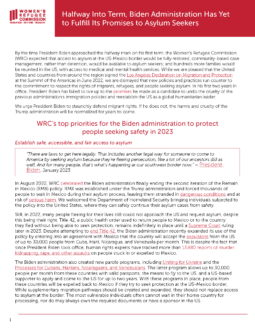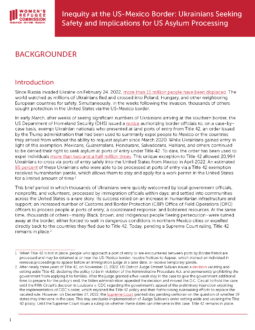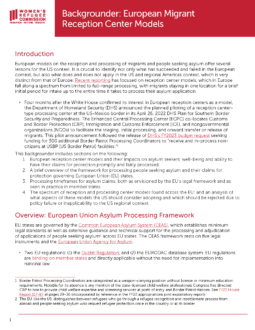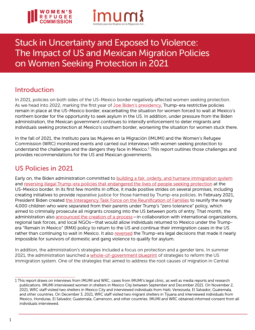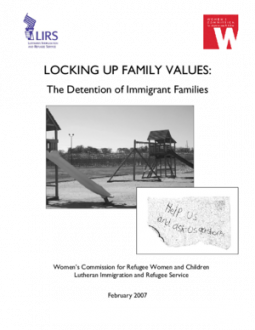
Locking Up Family Values: The Detention of Immigrant Families
PublishedAs of February 2007, the U.S. government has the capacity to detain over 600 men, women and children apprehended as family units along the U.S. border and within the interior of the country. Family detention space dramatically increased in 2006 with the opening of the T. Don Hutto Residential Center in Taylor, Texas. This facility, a key component in the Department of Homeland Security’s (DHS) Secure Border Initiative Family Custody Implementation Plan, 5 represents a major shift in the U.S. government’s treatment of families in immigration proceedings from a policy of releasing or separately detaining family members to a policy of family detention.
Based upon these findings, we recommend the following systemic changes to the U.S. government’s treatment of families in immigration proceedings:
- Discontinue the detention of families in prison-like institutions.
- Parole asylum seekers in accordance with international standards and DHS’s own policy
- guidelines
- Expand parole and release options for apprehended families.
- Implement alternatives to detention for families not eligible for parole or release.
- House families not eligible for parole or release in appropriate, nonpenal, homelike facilities.
- Expand public-private partnerships to provide legal information and pro bono legal access for all detained families, and to implement alternative programs.
Learn more about family detention of immigrants here.
Read the 2014 report on the resurgence of family detention.



